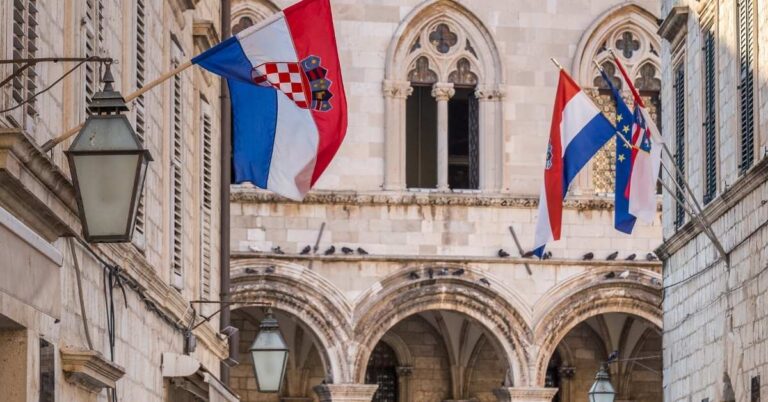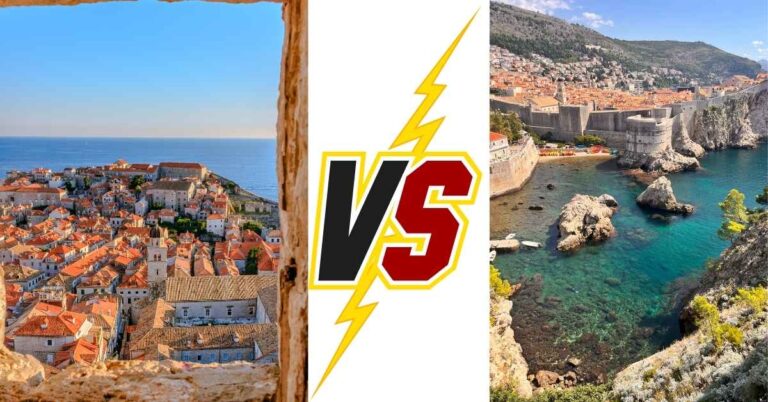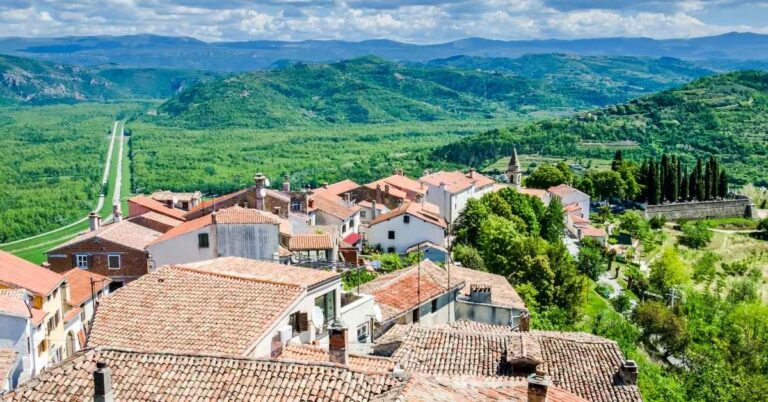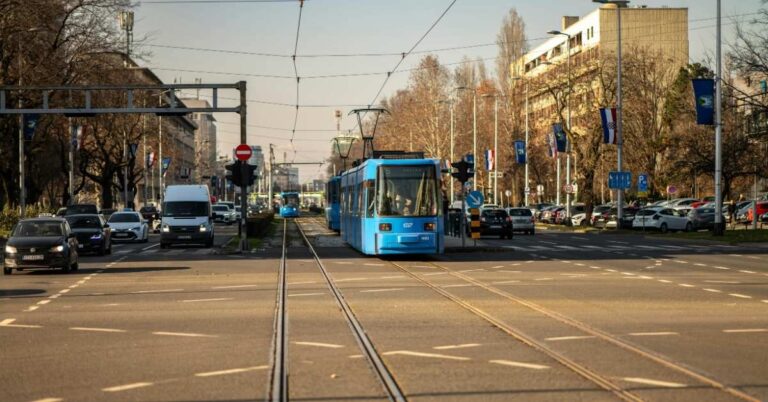Croatia’s stunning coastline, historic cities, and lush national parks make it a traveler’s paradise. But how do you get around this Adriatic gem without a hitch? Whether you’re island-hopping along the Dalmatian Coast or exploring the rolling hills of Istria, understanding Croatia’s transportation options is key to a smooth trip. From ferries to buses to rental cars, I’ve got you covered with everything you need to know to navigate Croatia like a pro. Ready to hit the road—or the sea? Let’s dive in.
Why Transportation Matters in Croatia
Croatia’s compact size is a blessing for travelers. You can zip from Zagreb’s urban buzz to Dubrovnik’s medieval walls in a day. However, with diverse regions—coastal, inland, and island—each with its unique vibe, choosing the right mode of transportation makes all the difference. Want to soak up the views on a scenic drive? Or maybe you prefer the ease of a ferry to a quiet island? Croatia offers a range of options to suit your style, budget, and itinerary. Let’s explore how to make your journey as memorable as the destinations.
Getting to Croatia: Your Starting Point
Before you start crisscrossing Croatia, you need to get there. The country’s well-connected airports and border crossings arrive a breeze, but planning saves time and money.
Flying into Croatia
Croatia has several international airports, with Zagreb, Split, and Dubrovnik being the main hubs. Zagreb connects to major European cities like London, Paris, and Frankfurt, while Split and Dubrovnik welcome seasonal flights from across Europe and beyond. Budget airlines, such as Ryanair and Wizz Air, offer affordable routes, particularly from the UK and Germany. From the U.S., you’ll likely have a layover in a European hub. Booking 3-6 months in advance snags the best deals, especially for summer travel. Once you land, airports have taxis, shuttles, or local buses to get you to the city center.
Arriving by Land or Sea
If you’re already in Europe, consider arriving by bus or train from neighboring countries like Slovenia, Hungary, or Bosnia. FlixBus runs reliable routes to Zagreb and coastal cities. Trains are less common but connect Zagreb to Ljubljana or Budapest. For a scenic entry, ferries from Italy—Ancona or Bari to Split or Dubrovnik—are a unique option. These overnight ferries let you wake up to Croatia’s coastline, ready to explore.
Renting a Car: Freedom to Explore
For ultimate flexibility, renting a car is an excellent way to explore Croatia. It’s perfect for exploring rural Istria, winding through Zagorje’s vineyards, or making spontaneous stops along the coast.
Why Choose a Car?
A car lets you set your own pace. Want to detour to a hidden beach or a hilltop village? No problem. Croatia’s roads are well-maintained, and highways like the A1 connect Zagreb to Split and Dubrovnik efficiently. Rental agencies, such as Sixt, Europcar, and local providers, are available at airports and city centers. Prices start around $30-$50 per day, with lower rates in the shoulder seasons. Just book early for summer to avoid limited availability.
Driving Tips and Considerations
Driving in Croatia is straightforward, with rules similar to most of Europe. Drive on the right, and keep headlights on at all times. Tolls apply on highways—pay with cash or card at booths. Parking in cities like Dubrovnik can be challenging, with tight spaces and high fees, so be sure to check if your accommodation offers parking. In rural areas, narrow roads demand caution, especially in Istria’s hilly interior. A GPS or offline map app, such as Maps.me, is a lifesaver for navigation.
Buses: Affordable and Reliable
If driving isn’t your thing, Croatia’s bus network is a budget-friendly alternative. It’s the backbone of public transport, connecting cities, towns, and even remote villages.
How the Bus System Works
Companies like FlixBus, Arriva, and Croatia Bus operate modern, air-conditioned coaches. Routes cover major destinations—Zagreb to Split takes about 5 hours, while Split to Dubrovnik is around 4 hours. Smaller towns like Rovinj or Zadar are also well-served. Tickets cost $10-$30, depending on the distance, and booking online secures your spot. Bus stations are centrally located, often with cafes or ticket counters for last-minute purchases.
Pros and Cons of Bus Travel
Buses are affordable and reliable, with frequent departures, especially in summer. Scenic routes, like the coastal road from Rijeka to Dubrovnik, offer stunning views. However, buses can become crowded during peak season, and schedules may be less frequent in rural areas or during off-season periods. Bring snacks and entertainment for longer rides, as not all buses have Wi-Fi or restrooms.
Ferries: Your Ticket to Island-Hopping
Croatia’s islands—Hvar, Korčula, Vis, and more—are a highlight, and ferries are the way to reach them. Whether you’re dreaming of a quick day trip or a multi-island adventure, ferries are essential.
Understanding Croatia’s Ferry Network
Jadrolinija is the leading ferry operator, running car ferries and passenger catamarans to dozens of islands. Krilo and TP-Line offer faster catamarans for foot passengers. Popular routes include Split to Hvar (1 hour) and Dubrovnik to Korčula (2 hours). Fares range from $5-$20 for catamarans and $20-$50 for car ferries, depending on the route. Check schedules on operator websites, as they vary by season.
Tips for a Smooth Ferry Experience
Book ferry tickets in advance for summer, as popular routes sell out. Catamarans are quicker but don’t carry cars, so plan accordingly. Arrive at the port 30 minutes early, especially for car ferries, to secure your spot. Seasickness is rare on these short routes, but bring meds if you’re prone. Ferries are a scenic treat, so grab a deck seat and enjoy the Adriatic views.
Trains: A Limited but Charming Option
Croatia’s train network is smaller than its bus or ferry systems, but it has its appeal for specific routes. If you love the romance of rail travel, it’s worth considering.
Where Trains Shine
Trains are best suited for inland routes, such as Zagreb to Rijeka (3-4 hours) or Zagreb to Osijek (4 hours). The scenic journey through Gorski Kotar’s mountains is a highlight. Croatian Railways (HŽ) operates clean, if slightly dated, trains. Tickets are cheap—$10-$20—and can be bought at stations or online. Night trains to Split or Rijeka offer a budget-friendly way to travel while sleeping.
Limitations of Train Travel
Trains don’t serve coastal hotspots like Dubrovnik or Split as directly as buses, and schedules are less frequent. Delays can happen, especially in rural areas. For most travelers, trains are a secondary option, best for specific routes or if you’re combining Croatia with neighboring countries like Slovenia.
Domestic Flights: When Time Is Tight
For long distances, like Zagreb to Dubrovnik, domestic flights can save time. They’re pricier but worth it if your itinerary is packed.
When to Fly
Croatia Airlines operates flights between Zagreb, Split, Dubrovnik, and smaller airports, such as Pula and Zadar. A Zagreb-Dubrovnik flight takes about 1 hour, compared to 8 hours by bus. Fares start at $50 one-way but can climb in summer. Book early to secure the best deals and check baggage allowances, as budget carriers may charge additional fees.
Is Flying Worth It?
Flights are ideal if you’re short on time or want to avoid long drives. They’re less scenic than ground transport, and airport transfers add time, but they’re a lifesaver for multi-region trips. Combine flights with ferries or buses for a balanced itinerary.
Rideshares and Taxis: Convenient Short Trips
For short distances or last-minute plans, rideshares and taxis are handy, especially in cities or tourist hubs.
Using Rideshares
Apps like Bolt and Uber operate in Zagreb, Split, and Dubrovnik. They’re cheaper than traditional taxis, with fares starting at $5 for short rides. Rideshares are great for airport transfers or late-night returns. Download the app before you arrive, as Wi-Fi isn’t always guaranteed at ports or stations.
Taxis and Private Transfers
Taxis are widely available but pricier—expect $10-$20 for a city ride. Always use licensed taxis with meters or agree on a fare upfront. For longer trips, such as Split to Plitvice Lakes, private transfers offer comfort but cost between $100 and $200. They’re ideal for groups or if you want a tailored schedule.
Biking and Walking: Eco-Friendly Exploration
Croatia’s compact cities and scenic trails make biking and walking excellent options for short distances or leisurely days.
Biking in Croatia
Cities like Zagreb and Rovinj offer bike rental shops, with daily rates ranging from $10 to $15. Istria’s Parenzana Trail, a former railway, is a cyclist’s dream, winding through vineyards and villages. Coastal paths in Split or Dubrovnik are also bike-friendly. Bring a helmet, as rentals may not include one, and lock your bike in busy areas.
Walking for Sightseeing
Croatia’s historic centers, like Dubrovnik’s Old Town or Split’s Diocletian’s Palace, are pedestrian-only, perfect for strolling. National parks like Plitvice and Krka have well-marked walking paths. Comfortable shoes are a must, as cobblestones and trails can be uneven. Walking lets you soak up details you’d miss from a car or bus.
Combining Transport for the Perfect Itinerary
The beauty of Croatia’s transport system is its flexibility. Mix and match options to suit your trip. For example, fly into Zagreb, take a bus to Plitvice Lakes, then take a ferry from Split to Hvar. A rental car works wonders in Istria, while bikes are great for island day trips. Plan transitions—check ferry-to-bus connections or car drop-off locations—to avoid hiccups. A little foresight makes your journey seamless.
Budgeting for Transportation
Transport costs vary depending on the mode of transportation and the season. Buses and ferries are the cheapest, with $100-$200 covering a week of travel. Car rentals add $200-$350, plus fuel and tolls (about $50-$100). Domestic flights or private transfers can increase budgets, ranging from $50 to $200 per leg. Save by booking early, traveling in the spring or fall, and opting for public transportation. Always have some cash (euros) for small fares or rural routes.
Tips for a Stress-Free Journey
Navigating Croatia is easy with a few tricks. Download apps like Jadrolinija or Arriva for real-time schedules. Learn basic Croatian phrases like “Gdje je autobus?” (Where’s the bus?) for rural stops. Pack light for ferries and buses, as luggage space is limited. Check weather forecasts, as rain can affect ferry or road conditions. Most importantly, build buffer time into your schedule—delays happen, but they’re part of the adventure.
Conclusion: Your Croatian Adventure Awaits
Croatia’s transportation options make exploring this stunning country a breeze, whether you’re cruising by ferry, driving coastal roads, or hopping on a bus. Each mode offers a unique way to experience the landscapes and culture, from the Adriatic’s sparkle to Zagreb’s charm. With a bit of planning, you’ll move seamlessly between destinations, leaving more time to savor Croatia’s magic. So, how will you navigate your trip? Grab your tickets, pack your bags, and get ready for an unforgettable journey.
FAQS
Q1: What’s the cheapest way to travel around Croatia?
Buses are the most budget-friendly, with tickets costing $10-$30 for major routes. Ferries to islands are also affordable, starting at $5-$20 for passengers.
Q2: Do I need a car to explore Croatia?
Not always. Buses and ferries cover most destinations, but a car offers flexibility for rural areas like Istria or national parks. Parking in cities can be challenging.
Q3: How do I book ferry tickets for Croatian islands?
Book online through Jadrolinija, Krilo, or TP-Line websites, especially for summer travel. Tickets are also available at port ticket offices, but they may sell out.
Q4: Are trains a good option for getting around Croatia?
Trains are limited, but they work well for inland routes, such as those between Zagreb and Rijeka. Buses are more frequent and cover coastal areas, making them a better choice for most travelers.
Q5: Is it easy to use rideshares in Croatia?
Yes, apps like Bolt and Uber work well in Zagreb, Split, and Dubrovnik. They’re cheaper than taxis and convenient for short trips or airport transfers.








